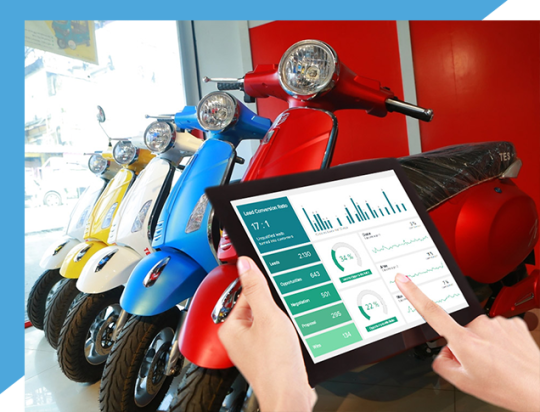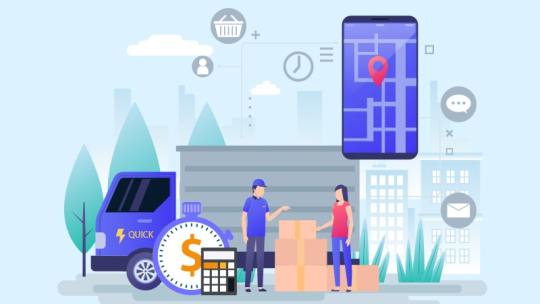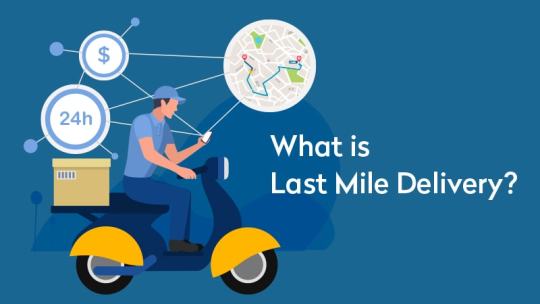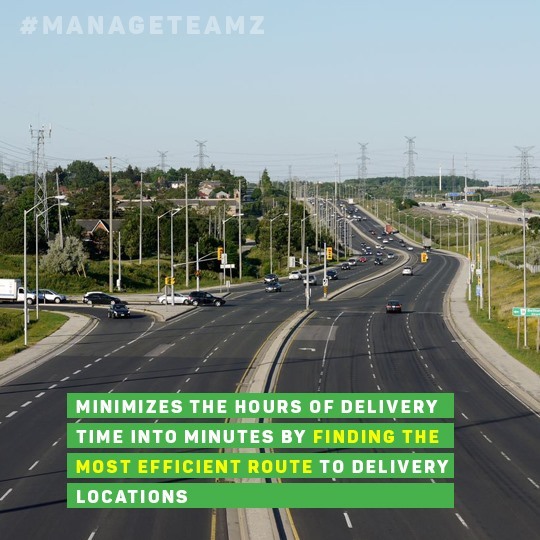#routeoptimizationsoftware
Explore tagged Tumblr posts
Text
Transport & Logistics Software Efficient Solutions – Neo Infoway
Discover powerful transport and logistics software solutions to streamline operations, optimize routes, manage fleets, and enhance supply chain efficiency.

#transportmanagementsoftware#logisticssoftwaresolutions#fleetmanagementsoftware#transportationlogisticssoftware#supplychainmanagementsoftware#routeoptimizationsoftware#warehousemanagementsoftware#freightmanagementsoftware#dispatchsoftware#logistictrackingsoftware#Inventorymanagementsoftware#shippingmanagementsoftware
0 notes
Text

Title - DMS for EV Manufacturers vs. Generic Distribution Management Systems
Distribution Management Systems (DMS) are powerful tools that help optimize and streamline distribution processes for different industries. In particular, DMS plays a crucial role in two specific domains: Electric Vehicle (EV) manufacturing and Business-to-Business (B2B) operations. While they share the goal of efficient distribution management, DMS for EV manufacturers and DMS for B2B businesses have distinct features tailored to their respective industries.
DMS for EV manufacturers are designed to address the unique challenges faced in the rapidly evolving EV market. These systems provide functionalities such as real-time inventory tracking, optimized charging station allocation, and intelligent routing for EV deliveries. With the growth of the EV industry and the increasing demand for electric vehicles, DMS for EV manufacturers have become essential tools for managing the complexities of logistics, inventory, and efficient vehicle delivery.
On the other hand, DMS for B2B businesses are focused on optimizing distribution processes for a variety of products and services. These systems offer features such as order management, inventory control, supply chain visibility, and integration with other business systems. They help B2B businesses streamline their operations, improve order fulfillment, enhance inventory accuracy, and ensure efficient supply chain coordination.
While both DMS for EV manufacturers and DMS for B2B businesses aim to improve distribution efficiency, they are tailored to meet the specific needs of their respective industries. By selecting the right DMS, EV manufacturers and B2B businesses can enhance their distribution strategies, reduce costs, increase customer satisfaction, and gain a competitive advantage in their markets.
Understanding the distinctions and benefits of DMS for EV manufacturers and DMS for B2B businesses is crucial for organizations seeking to optimize their distribution management processes and stay ahead in their respective industries.
Evolution of DMS for EV Manufacturers
The evolution of Distribution Management Systems (DMS) for Electric Vehicle (EV) manufacturers has witnessed significant advancements in response to the growing complexity and demands of the EV industry. As the industry continues to evolve, DMS solutions have adapted and improved to meet the specific needs of EV manufacturers. Here is an overview of the evolution of DMS for EV manufacturers:
Early Stages: In the early stages of the EV industry, DMS solutions focused on basic inventory management, order processing, and logistics coordination. The emphasis was on streamlining internal operations and ensuring timely delivery of EVs.
Integration of Charging Infrastructure: As the charging infrastructure for EVs expanded, DMS solutions evolved to incorporate functionalities related to managing and optimizing charging stations. This included features such as tracking charging sessions, monitoring charging station availability, and optimizing charging station allocation based on demand and capacity.
Real-time Data and Analytics: With advancements in technology and connectivity, DMS for EV manufacturers began offering real-time data and analytics capabilities. This allowed manufacturers to track inventory levels, monitor vehicle movements, and analyze distribution patterns in real-time. Real-time data and analytics facilitated better decision-making, improved inventory management, and enhanced overall distribution efficiency.
Intelligent Routing and Optimization: The evolution of DMS for EV manufacturers introduced intelligent routing and optimization capabilities. These features utilized algorithms and data analysis to optimize delivery routes, considering factors such as traffic conditions, charging station availability, and customer preferences. Intelligent routing improved delivery efficiency, reduced costs, and enhanced customer satisfaction.
Integration with IoT and AI: The integration of Internet of Things (IoT) technology and artificial intelligence (AI) has further shaped the evolution of DMS for EV manufacturers. IoT connectivity enables real-time monitoring of EV performance, charging status, and battery information, allowing for proactive maintenance and efficient resource allocation. AI-powered algorithms and predictive analytics provide insights for demand forecasting, inventory optimization, and route planning.
Future Trends: The future of DMS for EV manufacturers is likely to embrace emerging technologies such as machine learning, autonomous vehicles, and advanced predictive analytics. These advancements will enable even more efficient and automated distribution processes, precise demand forecasting, and adaptive routing strategies.
In summary, the evolution of DMS for EV manufacturers has seen a progression from basic inventory management to advanced analytics, intelligent routing, and integration with emerging technologies. The ongoing advancements in DMS solutions are crucial in supporting the growth of the EV industry, optimizing distribution processes, and ensuring efficient and sustainable EV transportation.
Impact on the DMS for EV Manufacturers writing industry
The impact of Distribution Management Systems (DMS) on the Electric Vehicle (EV) manufacturing industry has been significant, revolutionizing distribution processes and driving operational efficiency. Here are some key impacts of DMS on the EV manufacturing industry:
Streamlined Distribution Processes: DMS has enabled EV manufacturers to streamline their distribution processes, from inventory management to order processing and delivery. Real-time tracking of EV inventory, optimized routing, and efficient charging station allocation have improved the overall distribution efficiency, reducing lead times and enhancing customer satisfaction.
Enhanced Supply Chain Visibility: DMS provides EV manufacturers with real-time visibility into their supply chain, allowing them to track inventory levels, monitor order status, and identify potential bottlenecks. This visibility enables better inventory planning, reduces the risk of stock outs or excess inventory, and promotes efficient resource allocation.
Improved Operational Efficiency: The automation and optimization capabilities of DMS have significantly improved operational efficiency for EV manufacturers. Intelligent routing algorithms optimize delivery routes, reducing fuel consumption and transportation costs. Real-time data analytics and demand forecasting enable better production planning and inventory management, reducing waste and optimizing resource utilization.
Integration with Charging Infrastructure: DMS has played a crucial role in integrating and managing the charging infrastructure for EV manufacturers. By optimizing the allocation of charging stations, monitoring charging sessions, and analyzing charging patterns, DMS ensures efficient utilization of charging infrastructure, reduces wait times for EV owners, and promotes a seamless charging experience.
Scalability and Adaptability: DMS offers scalability and adaptability for EV manufacturers, accommodating the growth of their distribution networks and evolving market demands. As the EV industry expands, DMS can easily accommodate increased inventory volumes, additional charging stations, and complex logistics requirements, ensuring that distribution operations remain efficient and effective.
In summary, the impact of DMS on the EV manufacturing industry is profound. It has revolutionized distribution processes, enhanced supply chain visibility, improved operational efficiency, integrated charging infrastructure, and provided scalability for manufacturers. By leveraging the capabilities of DMS, EV manufacturers can meet the growing demands of the market, reduce costs, and deliver superior customer experiences.
Discuss emerging trends and technologies in distribution management, such as the integration of AI, IoT, and predictive analytics
Emerging trends and technologies in distribution management are transforming the way businesses handle logistics and supply chain operations. The integration of Artificial Intelligence (AI), Internet of Things (IoT), and predictive analytics has opened up new possibilities for optimizing distribution processes and improving overall efficiency.
AI brings advanced capabilities to distribution management by leveraging algorithms and machine learning techniques to analyze data and make intelligent decisions. It enables automated route optimization, demand forecasting, and inventory management, leading to cost reduction and improved customer service.
IoT plays a crucial role in distribution management by connecting devices and enabling real-time data collection. With IoT sensors and devices, businesses can track inventory levels, monitor vehicle performance, and even detect maintenance needs in real-time. This connectivity allows for proactive decision-making, efficient resource allocation, and enhanced visibility throughout the distribution network.
Predictive analytics utilizes historical data and statistical models to forecast future demand, optimize inventory levels, and anticipate supply chain disruptions. By leveraging these insights, businesses can make informed decisions, reduce stock outs, and ensure smooth distribution operations.
The integration of these technologies enables more proactive and data-driven decision-making in the distribution management system. It leads to optimized routing, improved inventory management, enhanced supply chain visibility, and better customer satisfaction. As these technologies continue to evolve, businesses can expect even more advanced solutions for managing their distribution processes effectively.
#Distributormanagementsystem#Dealermanagementsystem#Distributionerpsoftware#DemandPlanningSoftware#DistributionManagementSystem#Inventorymanagementsystem#ordermanagementsystem#routeoptimizationsoftware#warehousemanagementsystem#salesanddistributionmanagementsoftwareTelecom#Salesforceautomationforfmcgindustries#mobilebasedsalesforceautomationsoftware#distributionmanagementsoftwareindia#onlinedealershipmanagementsystem#DynamicSearchAds#Billingandstockmanagementsoftware#Saleanddistributionmanagement#distributormanagementsystemsoftware#b2borderingapp#evcrmdms
0 notes
Text
6 ways to reduce your last mile delivery costs in your business
We are living in times when lightning speed delivery has become a new norm. The latest technology advancements have alleviated the consumer expectations to the all-time high. If we only talk about ecommerce in the last two years, then its growth has increased the B2B last mile demand by about 33%. Similarly, B2C businesses have also experienced a rise of 67%.

While the consumers are enjoying this fast-paced service, the logistics and supply-chain companies are constantly feeling the heat to manage and make these increased volumes of last mile deliveries practical and profitable.
The overall efficiency of deliveries suffers when it comes to the management of the massive volumes of last mile deliveries. That’s precisely the reason why around 25% of the companies have named delivery efficiency as their greatest last mile delivery challenge.
Original Source : 6 ways to reduce your last mile delivery costs in your business
0 notes
Photo

Make your driver’s job easy with ManageTeamz's driver application that has several rich features in addition to the interactive and intuitive user interface.
Sign up now: https://bit.ly/37TFA5y
#DriverTrackingApp #DriverApp #RouteOptimizationSoftware #DriverManagement #TrackingApplication
0 notes
Text
OVAR (ORDER VEHICLE ASSIGNMENT & ROUTE PLANNING) Route planning technological solution
OVAR (ORDER VEHICLE ASSIGNMENT & ROUTE PLANNING) Route planning technological solution that can overcome the #COVID-19 #logistics #delivery #challenges.

Share your business challenges with us and our team will guide to the optimal solution for your business.
Schedule a meeting today http://bit.ly/2ZXT2QB
#deliverysolutions #routeoptimizationsoftware #coronavirus #ondemanddelivery #lastmiledelivery #realtimetracking #waterdelivery #Fooddelivery
0 notes
Text
Solving last mile delivery problems with Fixlastmile – Infographic
No matter, what business you’re in, one of the major objectives is always to minimize the cost and increase efficiency and productivity. If we consider the logistics and the supply-chain business then it’s the last phase which is unarguably the most important and most problematic of all. Since it’s the last phase of the process; it’s called the last mile delivery. But why is the last mile delivery so important?

Well to understand that first, we need to understand what it actually means. Last mile delivery can be simply defined as the transportation of goods from the hub to the final destination. From the definition it sounds like a simple task, so why is it so important?
For starters, it’s the face of your business. How you execute in this phase will have a huge impact as it will be the only impression that you’ll leave on your costumers. Last mile delivery is also important when it comes to the economics of the logistics and supply chain business. It’s important because it constitutes about 30% of the total supply-chain costs which is almost one-third of the total cost.
So, the next question which arises is that how can you optimize your last mile delivery to gain higher efficiency and profits. And the answer to that question is Fixlastmile.
Original Source : Solving last mile delivery problems with Fixlastmile – Infographic
0 notes
Text
A comprehensive guide on last mile delivery solution: Features, benefits, and future implications
How does it feel to get your order on the same or the next day? You feel special; however, this wasn’t the case earlier. The introduction of technology has totally disrupted the logistics industry. On the other hand it has also given birth to the eCommerce.

And today due to technology both logistics and eCommerce share a common link. The symbiotic relationship between logistics and the eCommerce is strengthened by this link which we call the last mile delivery.But what exactly is last mile delivery and why does it matter? Let’s find out.
What is last mile delivery?
As the name suggests, last mile delivery is the last leg of the delivery process which takes place from the distribution center to user’s doorsteps.
The last mile delivery can range from just a few blocks to 50 to 100 miles.The prime objective of the last mile delivery is to deliver the package to the customers as quickly as possible.
Last mile is considered as the most important element in the logistics and supply chain business.It’s also the key to the customer satisfaction.
Last mile is the most time consuming and expensive part of the whole shipping process.So, if done right, it can save a massive amount of time and money which in turn can make your business both efficient and profitable.
Original Source : last mile delivery solution: Features, benefits, and future implications
0 notes
Text
What will the Route Optimization Software Market size and the growth rate be in 2025?
We live in the age of instant gratification. Today it is possible to buy something on an ecommerce site in the morning and receive it by the evening. The phenomenon of same-day delivery along with drone delivery are taking the customer experience to the next level. However, this wasn’t possible a few decades ago.

A major contributor to this massive change is the technology that has continuously evolved in the logistics and transportation sphere. And one name that comes to the top of my mind is route optimization software.
The popularity of the route optimization software has skyrocketed in the recent past and it is expected to increase further even in the future.In this article, we will see the market scenario and growth of route optimization software for the next five year.But before that let’s understand what route optimization actually is.
What is Route Optimization?
Route optimization process helps to discover the best route out of the available ones when there are multiple stoppages.
The parameters to find the best routes may vary; for some, it is about ducking the traffic and rush hours; for others, it would be the cost-effectiveness and convenience (e.g., toll booths, etc.).
Therefore, route optimization is more than merely finding out the fastest and the shortest distance between point X and Y.
Businesses use route optimization software to cut down the drive time when there are multiple stops and also considers dynamic complexities like the capacity of a vehicle, time window to perform end-user delivery, driver schedules, and other such things.
Original Source : Route Optimization Software Market size and the growth
0 notes
Link

0 notes
Photo

Move away from the inefficient manual route planning. Go with automated routing algorithms to save time and reduce delivery costs.
Signup now: https://bit.ly/37TFA5y
#RoutePlanningSoftware #AutomaticScheduling #RouteOptimizationSoftware #ManageTeamz
0 notes
Photo

Send your customer's gift to their beloved one quickly with the help of #ManageTeamz.
Try for free: https://bit.ly/3rDlDKx
#GiftDelivery #FlowerDelivery #DeliverySoftware #RouteOptimizationSoftware #RoutePlannerApp #RoutePlanning #DispatchSoftware
0 notes
Photo

We know the time importance. ManageTeamz is giving a most efficient route to deliver all your orders on time.Try now for free: https://bit.ly/36lNgg6
#RouteOptimization #RouteOptimizationSoftware #RoutePlanner #RoutePlanningSoftware #DeliverySoftware
0 notes
Photo

Manage your drivers and let us plan your routes for you with route optimization, schedule, assign, and dispatch hundreds of jobs within seconds! Signup now: https://bit.ly/2KrB0j3. #RouteOptimizationSoftware #DeliveryShedulingSoftware #RoutePlanningSoftware #ManageTeamz
0 notes
Photo

#ManageTeamz #RoutePlanningSoftware minimizes the hours of delivery time into minutes by finding the most efficient route to delivery locations. Signup now: https://bit.ly/36g7kQo #DeliveryManagementApp #RouteOptimizationSoftware
0 notes

